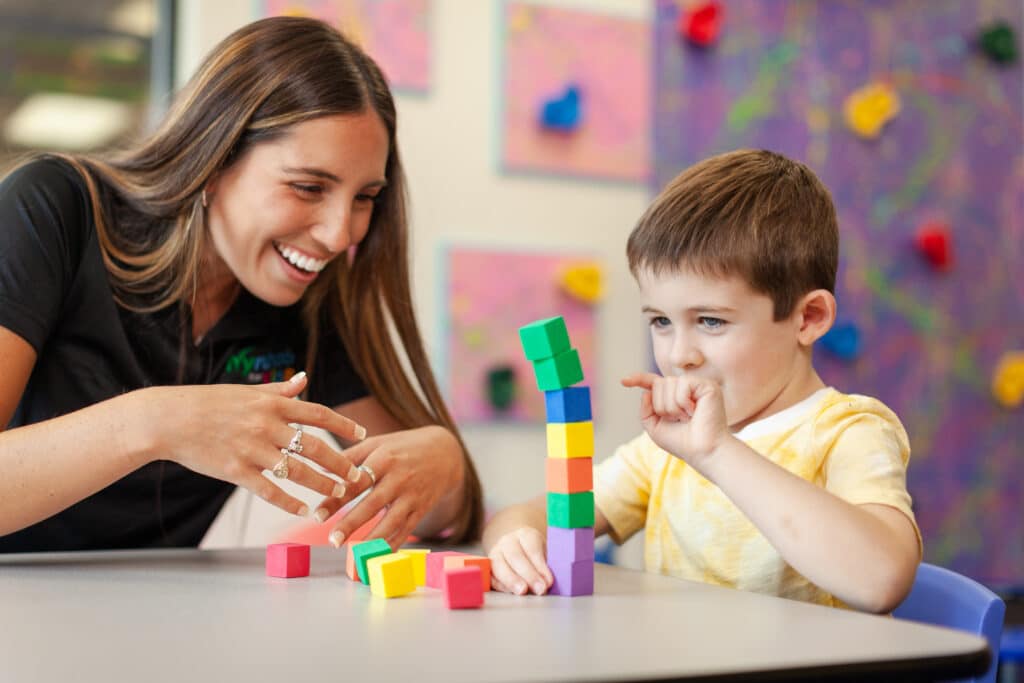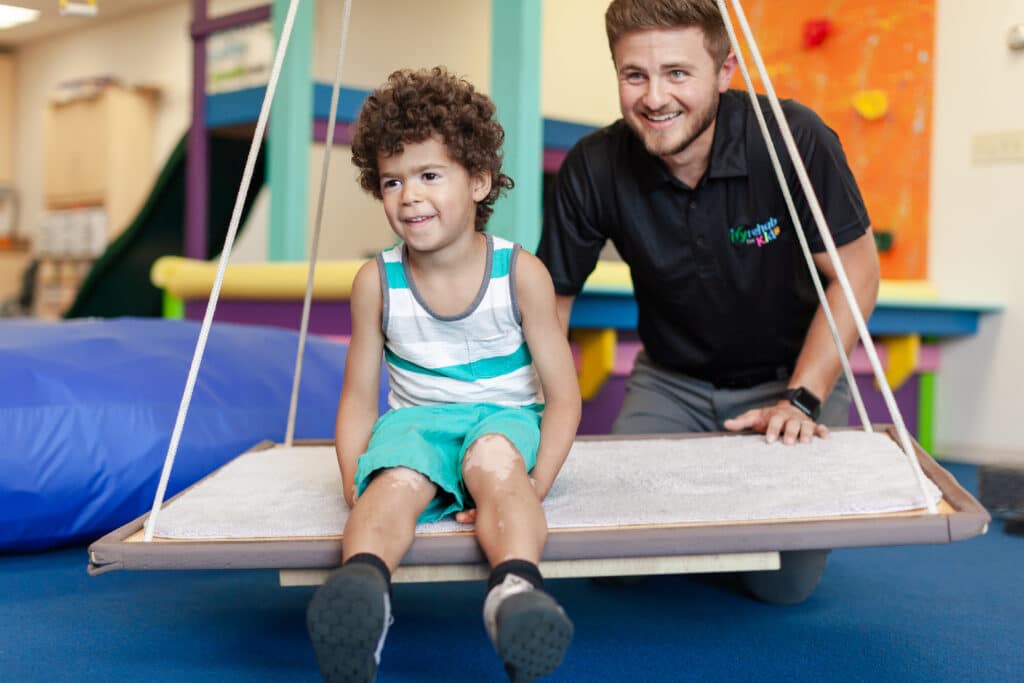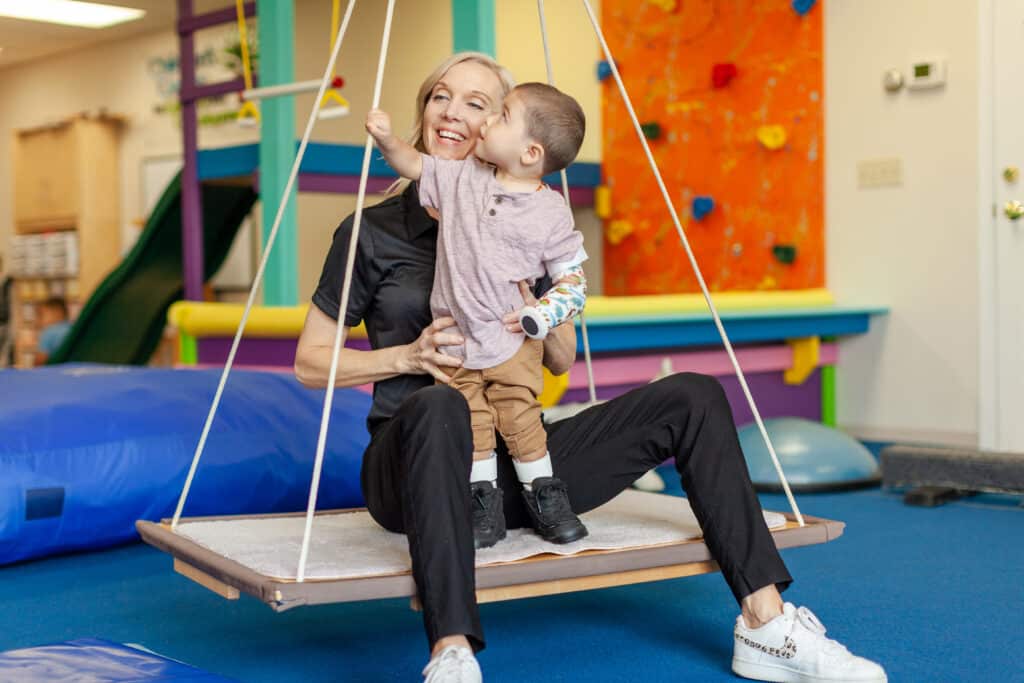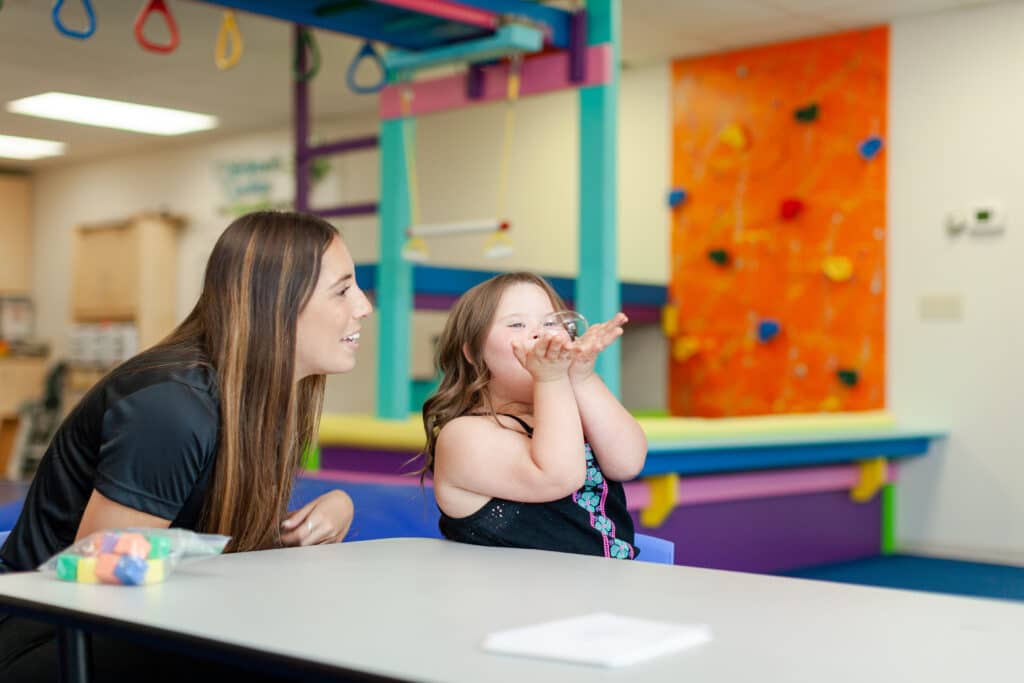Sensory input is all around us. For most people, the brain processes that information seamlessly—but for some children, sensory input can feel confusing, overwhelming, or even distressing. That’s where sensory integration comes in, and why it plays such a vital role in pediatric occupational therapy.
If you’re an occupational therapist (or aspiring to become one), understanding sensory integration is key to supporting kids in building skills, independence, and confidence.
What Is Sensory Integration?
Sensory integration refers to the way the brain receives, organizes, and responds to sensory information. This includes input from the eight sensory systems:
- Tactile (touch)
- Proprioception (body awareness)
- Vestibular (balance and movement)
- Visual
- Auditory
- Olfactory (smell)
- Gustatory (taste)
- Interoception (internal body cues like hunger or heart rate)
Sensory integration therapy focuses on helping individuals process this input more effectively so they can participate in meaningful everyday activities.
Dr. A. Jean Ayres first developed this framework in the 1970s, and it remains a core foundation of pediatric occupational therapy practice today. Her work emphasized the importance of “just right challenges” that help children adaptively respond to their environments (Ayres, 2005).


Why Sensory Processing Matters in Childhood
When the brain has difficulty processing sensory input, it can result in a condition known as Sensory Processing Disorder (SPD). Though SPD is not yet included in the DSM-5 as a standalone diagnosis, it is widely acknowledged by occupational therapy professionals and supported through clinical experience and research.
Children with sensory processing challenges may:
- Avoid certain textures, sounds, or movements (sensory avoidant)
- Seek out intense sensory input (sensory seeking)
- Struggle with recognizing and interpreting sensory input (discrimination challenges)
These differences can affect nearly every aspect of development—attention, emotional regulation, motor planning, social interaction, and everyday tasks like dressing or mealtime routines. According to the American Occupational Therapy Association (AOTA), sensory integration strategies can support a child’s ability to engage in daily life, both at home and in the classroom.
What the Research Says
A growing body of evidence supports the use of sensory integration in occupational therapy, particularly for children with autism and sensory-related challenges. A 2019 systematic review in the American Journal of Occupational Therapy found that Ayres Sensory Integration® therapy was associated with improvements in goal attainment and functional performance in children with autism (Schaaf et al., 2019).
Standardized assessments—like the Sensory Profile 2 (SP2), the Sensory Integration and Praxis Test (SIPT), and the DeGangi-Berk Test of Sensory Integration (TSI)—help therapists create measurable, individualized treatment goals. These tools, paired with clinical observations and family input, help occupational therapists build child-centered plans that are both responsive and effective.

What Sensory Integration Looks Like in Practice
In the clinic, sensory integration treatment is dynamic and personalized. Therapists might introduce sensory-rich activities, like swinging, playdough, or finger painting, to help children build tolerance and regulation. They might recommend adaptive clothing or adjust lighting and sound in the environment to reduce overwhelm.
Treatment is not just about tolerating stimuli—it’s about helping kids feel safe and confident in their bodies so they can fully engage with their world.
Some of the most common clinical goals include:
- Improved emotional regulation
- Independence in daily routines
- Increased social interaction
- Stronger motor planning and coordination
Families are central to the process, and therapists work closely with caregivers to ensure strategies carry over into home and community life.
Want a deeper dive into how therapists approach sensory integration? Watch our free on-demand webinar: “Clinically Speaking: Sensory Integration”
Challenges – and Opportunities – for Pediatric OTs
Treating sensory processing differences isn’t always straightforward. Every child responds differently, and progress takes time. Pediatric occupational therapists require flexibility, creativity, and a solid understanding of sensory integration theory and practice.
Common challenges include:
- Wide variability in how sensory symptoms present
- Risk of overstimulation in clinical environments
- Navigating insurance reimbursement for sensory integration therapy (e.g., CPT code 97533)
Still, the rewards are immense. With the right support, kids can become independent and confident in navigating their environment. And for therapists, there’s deep satisfaction in helping families navigate this journey with compassion and care.
Explore Pediatric Occupational Therapist Careers at Ivy Rehab for Kids
If you’re passionate about helping kids thrive through sensory-informed care, Ivy Rehab for Kids offers a supportive, collaborative environment where you can grow your skills and make a difference.
Our teams include board-certified pediatric OTs, clinical mentors, and access to continuing education programs. Whether you’re early in your career or looking for your next clinical home, we’d love to connect with you. Learn more about pediatric occupational therapist opportunities at Ivy and apply today!

About the Author
Brittany Bosley is a pediatric outpatient occupational therapist who is Board Certified in Pediatrics through AOTA. Brittany has been with Ivy Rehab since 2019 and specializes in developmental milestones, sensory integration, and DIR Floortime approach. She is currently the Director of the Pediatric Occupational Therapy Residency Program and coordinates pediatric continuing education for Ivy Rehab. She lives in Charlottesville, VA, with her husband and two kids (Boden, three years old, and Evelyn, nine months old). In her spare time, she enjoys being outdoors, baking, and reading.
References
Ayres, A.J. (2005). Sensory Integration and the Child: 25th Anniversary Edition. Western Psychological Services. Retrieved from https://www.wpspublish.com/sensory-integration-and-the-child-25th-anniversary-edition
American Occupational Therapy Association (AOTA). (2023). Sensory Integration and Sensory Processing: Clarifying the Terminology. SIS Quarterly Practice Connections, 8(2), 25. Retrieved from https://www.aota.org/publications/sis-quarterly/sensory-integration-processing-sis/sipsis-2-25
Schaaf, R.C., Dumont, R.L., Arbesman, M., & May-Benson, T.A. (2019). Efficacy of occupational therapy using Ayres Sensory IntegrationÒ: A systematic review. American Journal of Occupational Therapy, 73(1), 73011800810p1-7301180010p10. https://doi.org/10.5014/ajot.2019.028431





